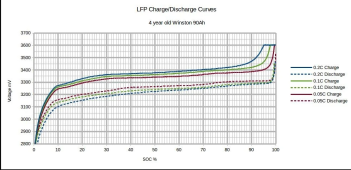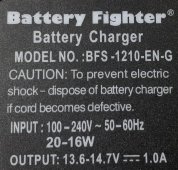tomashubelbauer
New Member
Hey folks, I was recommended to repost my question from https://diysolarforum.com/threads/i...ith-much-lower-current-than-recommended.50780 here:
Long story short, I am a complete novice and I happen to have a 13.6-14.7 V / 1 A charger meant for gel batteries at hand and I also have a new SOK battery, this one:

 www.europe.sokbattery.com
www.europe.sokbattery.com
Its spec say it needs 14.4-14.6 V / recommended 40 A to charge. My charger I guess is compatible voltage-wise, but the current is super low. My question is, is this only affect the charge time (even if significantly) or could it damage the battery?
The battery came almost discharged (it seems) but I won't be able to tell for sure until I cycle it twice and the BMS synchronizes and shows the true SOC.
This is mostly me being curious, I don't have a proper charger now but I did order one because I will need it in the future anyway.
Long story short, I am a complete novice and I happen to have a 13.6-14.7 V / 1 A charger meant for gel batteries at hand and I also have a new SOK battery, this one:

Marine Grade 12V 206Ah Battery, Sealed Plastic Box Bluetooth&Built-in heater | SOK Battery Europe
EU - Pre order. Will be in stock in mid-May. All pre-order can enjoy - €50 discount. Contact cusotmer service to get the refund. UK - Out of stock. Latest V8 version Bluetooth BMS.SK12V206PH designed for cold weather using! Can safely charge at temperatures down to -20°C (-4°F) by a standard...
 www.europe.sokbattery.com
www.europe.sokbattery.com
Its spec say it needs 14.4-14.6 V / recommended 40 A to charge. My charger I guess is compatible voltage-wise, but the current is super low. My question is, is this only affect the charge time (even if significantly) or could it damage the battery?
The battery came almost discharged (it seems) but I won't be able to tell for sure until I cycle it twice and the BMS synchronizes and shows the true SOC.
This is mostly me being curious, I don't have a proper charger now but I did order one because I will need it in the future anyway.




